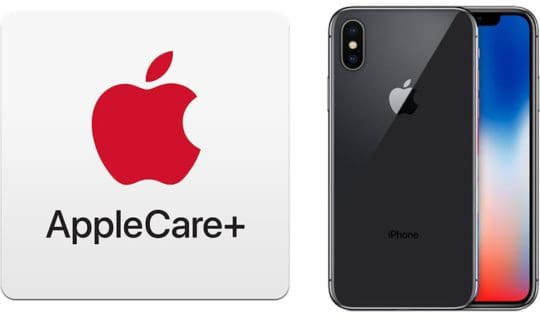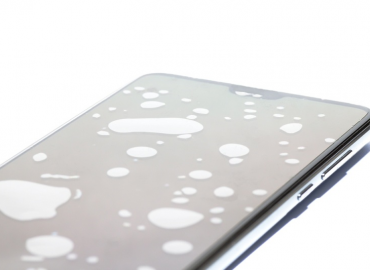Do you need a case or screen protector for your iPhone
Do you need a case or screen protector for your iPhone?
Is purchasing a case or screen protector for your new iPhone 11 and iPhone 11 Pro really necessary? Although Apple’s iPhone 11, iPhone 11 Pro and iPhone 11 Pro Max has some significant upgrades in the durability department, a lot of our readers wonder if they still need to purchase a screen protector and/or case.
While they may not be as prone to cracks, scratches or breakage as past iPhones, Apple’s new devices aren’t indestructible.
Because of that, we think cases and screen protectors are still a good idea for most people. And I personally use a screen protector and a case on my iPhone 11.
Here’s what you should know.
Do you really need a case for iPhone ?
Smartphone cases come in a lot of different flavors. But, defining them broadly, there are standard cases to ward off drop damage and waterproof cases for use in water.
One of them may be necessary, but whether you should use the other category really comes down to how you use your smartphone.
Drop-proof cases for your iPhone 11

The glass back and display of the iPhone 11 lineup is the “toughest glass ever in a smartphone,” according to Apple CEO Tim Cook.
Of course, the “toughest glass ever” is still glass.
That means it will ultimately break if subjected to a hard enough impact, or if it’s repeatedly dropped.
The iPhone 11 lineup should be a lot more resistant to cracking or breaking than past Apple handsets, but drop tests have revealed that the glass can still crack. Because of that, we recommend slapping a case on it.
On the other hand, because of the increase in durability, it doesn’t necessarily need to be a particularly bulky or cumbersome case.
You can probably get away with a soft silicon case, like the kind that Apple itself sells. Thinner cases like this one or this one could also be good options.
If, however, you drop your iPhone a lot, you may want to invest in a slightly tougher case.
Waterproof cases for your iPhone 11

The iPhone 11, iPhone 11 Pro and iPhone 11 Pro Max all carry an IP68 dust- and water-resistance rating.
That basically means they can withstand submersion in up to 1.5 meters (about 4.9 feet) of water for up to 30 minutes. Apple actually says that the Pro models can withstand up to 30 minutes in 4 meters (13 feet) of water.
To put it another way, water-resistance and waterproofing aren’t the same things. Because of that, it all comes down to how you use your iPhones.
If you’re only worried about the occasional splash of water, coffee spill or rainstorm, then you should be fine foregoing a waterproof case.
If you plan on using your iPhone in the water a lot — such as for swimming, diving, or surfing — then it’s definitely worth putting a good waterproof case on your iPhone. This also holds true for folks that work around water and have a greater risk of accidentally dropping their iPhones in water.
Some good options include this Supcase model or this Redpepper case.
Do you need a screen protector for iPhone 11 or iPhone 11 Pro?

It’s actually been quite a few years since aftermarket screen protectors have been “necessary.” Display glass on early iPhones and other smartphones was notoriously prone to scratches and breaking
But, as we mentioned earlier, Apple’s display glass is tougher than ever on the iPhone 11 Series.
iPhone 11 uses a matte glass body and Corning glass for its screen with a thickness of 8.1 mm–that’s pretty durable! But things like scratches do happen, especially if you carry your iPhone in your pocket or purse with other items. And that’s why we highly recommend a screen protector, preferably on made of tempered glass rather than plastic.
Most users should use a screen protector on their device
There are a few exceptions to that, however.
Beach sand is notoriously good at scratching iPhones — something to keep in mind for those that live by the sea. iPhone users who keep their devices in pockets or bags with keys and other metal objects should also probably install a screen protector on their devices.
In addition to warding off fingerprints and scratches, screen protectors could also add a bit of additional drop protection to your display.
But, of course, it’s likely that the material of the screen protector is going to be softer than the actual display glass. While it’ll keep your screen scratch-free, scratches will likely appear on the screen protector itself.
You can just swap the screen protector. But some users are particular about scratches in general. Just something to keep in mind.
It really comes down to personal preference, how you use your device, and whether or not you can deal with a few minor scratches.
As far as which screen protectors to use, we always recommend opting for the higher-quality tempered glass options. They’ll not interfere with the touch performance and “display-feel” a lot less than cheaper screen protectors.
There are also liquid screen protectors. This one, made by Qmadix, even offers to pay users $100 toward screen repairs if their devices crack after the liquid protector is installed.
A note about AppleCare+
Cases and screen protectors may go a long way toward keeping your device safe. But even with them installed, cracks or scratches can still happen. And Apple Care+ for iPhone has you covered for some accidental damage like scratches!
At the end of the day, if you’re really looking to keep your iPhone in tip-top shape for as long as possible, it may be smart to invest in AppleCare+ or carrier-based insurance.
AppleCare+, for example, includes two incidents of accidental damage coverage — meaning you’ll be able to get screen cracks and scratches repaired for a lot cheaper than you would otherwise.
There are hundreds of iPhone case available in repairbuddy, check with our friendly staff.





